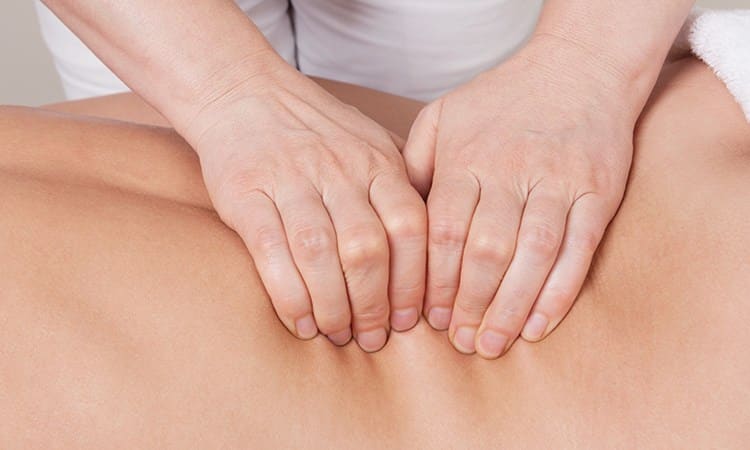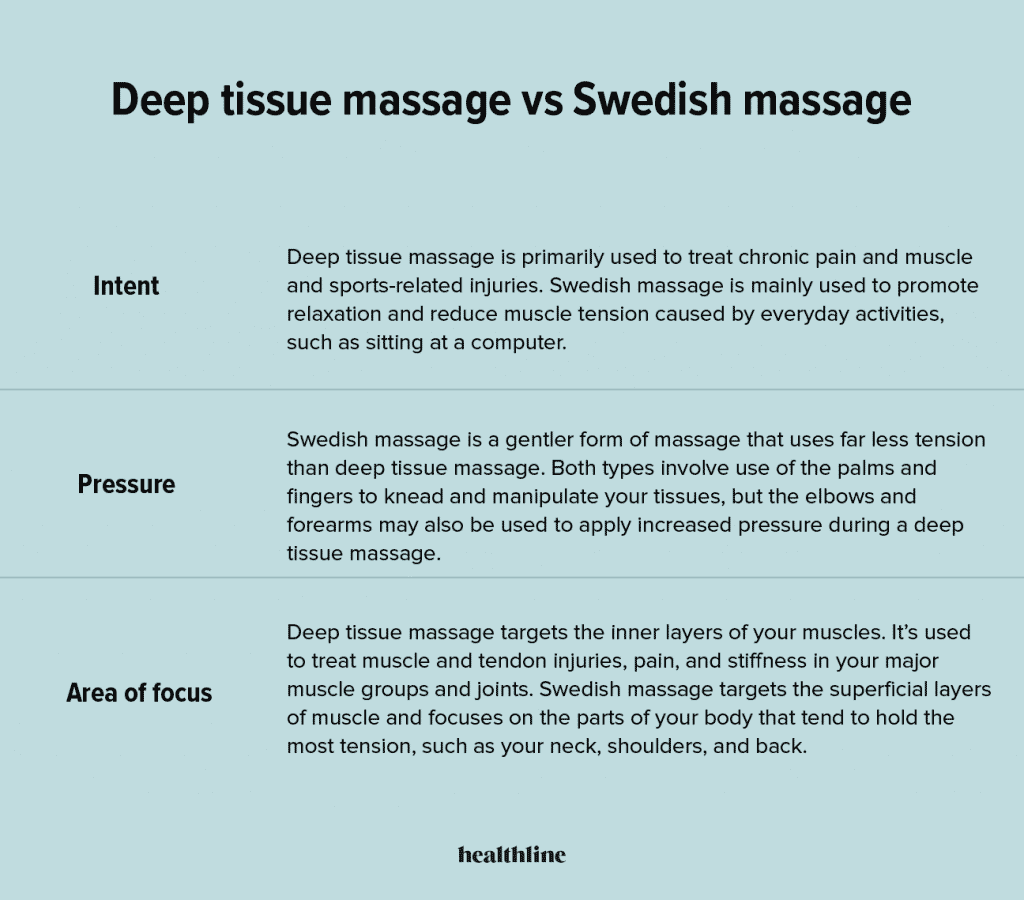- 13725 N Dale Mabry Hwy Tampa, FL 33618
- [email protected]
- (813) 961-6866
Is a Deep Tissue Massage Beneficial to Your Muscles?
What is deep tissue massage, and how does it work?

Deep tissue massage is a type of massage used to treat musculoskeletal problems like strains and sports injuries. It entails applying continuous pressure to the inner layers of your muscles and connective tissues with slow, deep strokes. This aids in breaking up scar tissue that accumulates after an injury and reduces muscle and tissue tension.
It may also hasten the healing process by improving blood flow and decreasing inflammation.
By reading, learn more about deep tissue massage, including how it compares to Swedish massage and what to expect during a session.
What are the advantages of getting a deep tissue massage?

Deep tissue massage is beneficial to both the body and the mind. Unlike other massage techniques that focus on relaxation, deep tissue massage helps relieve muscle pain and stiffness. However, it can also help you relax mentally.
Deep tissue massage improved persons with chronic low back pain, according to a 2014 study including 59 participants. Its effects were compared to those of nonsteroidal anti-inflammatory medicines like ibuprofen, according to the scientists (Advil).
Deep tissue massage has also been claimed to help with:
- sports injuries
- fibromyalgia
- plantar fasciitis
- high blood pressure
- sciatica
- tennis elbow
What does Deep tissue massage have in common with Swedish massage?

Massage therapy is divided into deep tissue massage and Swedish massage. Both employ the same strokes, yet they serve different purposes and have vastly different pressure levels.
The following are the primary distinctions between deep tissue and Swedish massage:

During the massage, what happens?

Your massage therapist will want to know about your trouble areas before beginning your deep tissue massage. A deep tissue massage can target any part of your body or just a specific spot.
You’ll be asked to lie on your back or stomach under a sheet once you’re ready. Your amount of undress is up to you, but the region that has to be worked on must be revealed.
The massage therapist will warm up your muscles with a softer touch. Once you’re warmed up, they’ll start working on your trouble areas. Deep kneading and stroking with varying degrees of severe pressure will be used.
Are there any side effects to deep tissue massage?
Following a deep tissue massage, it’s not uncommon to experience some soreness for a few days. Soreness can be relieved by using a heating pad or a cold pack wrapped in a towel.
Though massage treatment is generally considered safe, deep tissue massage involves extremely forceful pressure and may not suit many people.
If you have any of the following conditions, see your doctor before getting a deep tissue massage:
- have a history of blood clots or a clotting disorder
- are taking blood thinners
- have a bleeding disorder
- have cancer or are undergoing cancer treatment, such as chemotherapy or radiation
Deep tissue massage should be avoided by anyone with osteoporosis or cancer that has spread to the bones, as the hard pressure employed may induce a fracture. If you’re pregnant, you should also avoid deep tissue massages. Swedish massage, for example, is a gentler style of massage that may be a better choice.
If you have an open wound or any skin illness, you must postpone contracting a new infection or worsening an existing one.
What is the best way to locate a therapist?
Working with a competent massage therapist is essential to experience a deep tissue massage.
To locate a massage therapist, follow these steps:
- ask your doctor or physical therapist for a referral
- ask friends and family for a recommendation
- Search the National Certification Board for Therapeutic Massage & Bodywork’s database
- use the America Massage Therapy Association’s database
Keep the following points in mind while you interview massage therapists:
Focused on the area. All massage therapists do not offer deep tissue massage. Some people are taught various styles, while others concentrate on one or two. Ask if they offer deep tissue massage and what ailments they’ve dealt with previously.
Cost. Inquire about session fees and whether they provide cost-cutting options, such as a sliding-scale option. You should also check with your health insurance provider to see if massage therapy is covered since some do, especially for specific ailments.
Credentials. Please inquire about the therapist’s credentials and confirm that they are licensed to perform massage therapy in your area. The massage therapy profession is regulated in most states in the United States.
Last but not least
Deep tissue massage is best for persons who participate in high-intensity physical activity like jogging or have an injury or chronic pain.
Swedish massage is softer and maybe a better alternative if you have a low pain threshold or search for relief from strained muscles. If you have an underlying medical condition, see your doctor before trying deep tissue massage.
Click here to request a reservation for your Deep tissue massage.

